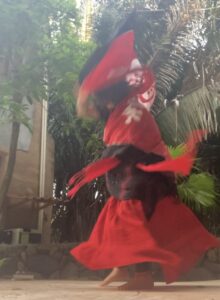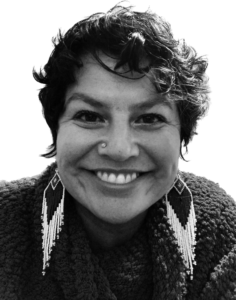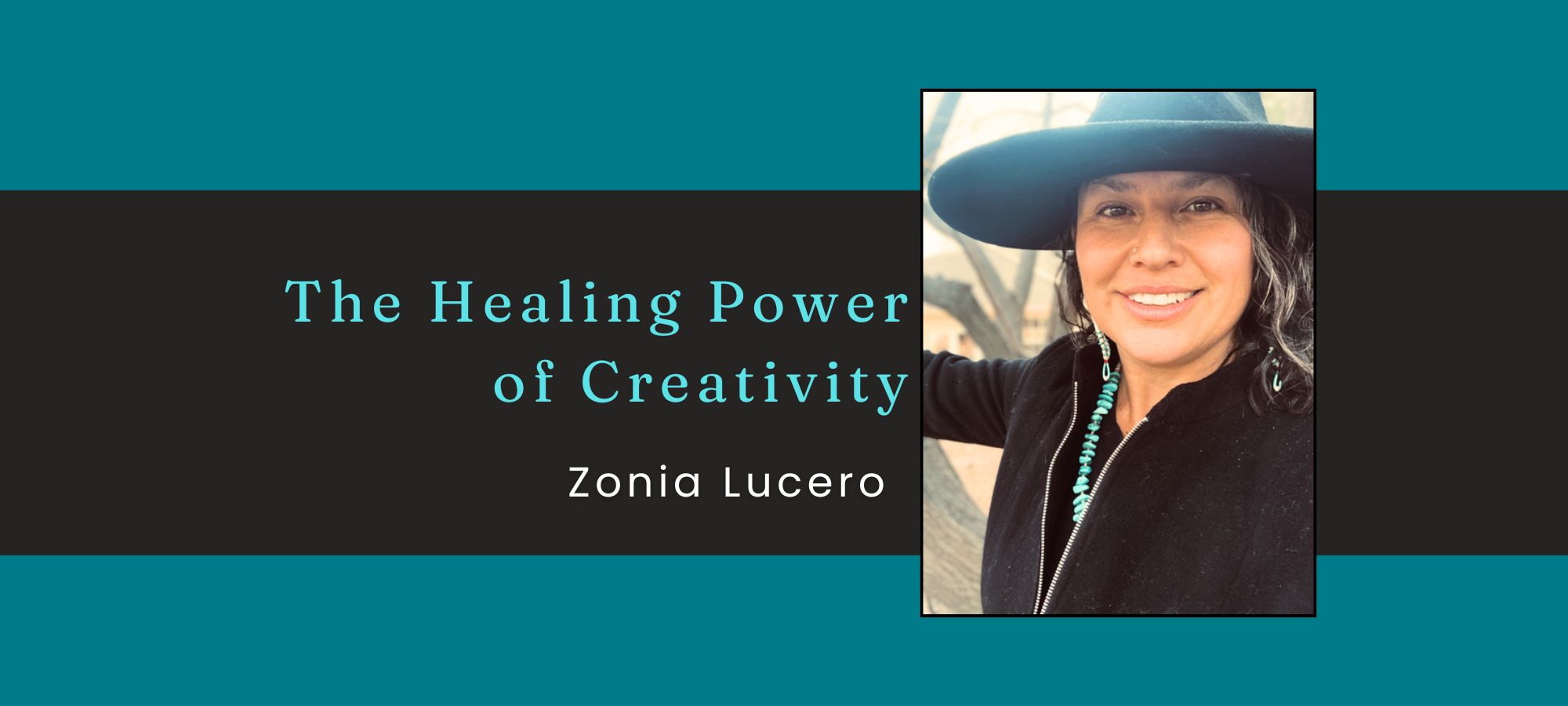Zonia is adjunct faculty in the M.A. Depth Psychology and Creativity with Emphasis in the Arts and Humanities at Pacifica. I’m delighted to learn more about her work, as well as her upcoming course, “The Healing Power of Creativity.”
Angela Borda: I understand you are an alumni of Pacifica’s M.A. Depth Psychology and the Creative Life, as well as being an adjunct faculty member. Can you share with us something of your background and what led you to Pacifica?
Zonia: I started off as a high school teacher, but always in the background were the somatic wisdom tradition modalities that became my actual life vocation. When Covid hit, I had been living an Internet-free, remote life in the jungles of Nayarit, Mexico. When the borders began to close, I was synchronistically being interviewed to return to the classroom online. After 20 years out of the educational field, just in time for lock down, I was hired to be principal for the summer. The experience made me realize the academic part of myself needed tending. As that job ended, so did the awareness of Pacifica Graduate Institute rise. I began automatic writing for fun and embedded in the text was Pacifica and psychology. I remembered this had been a life goal and so I entered the program.
Angela: What has it been like making the transition from graduate of the program to faculty? What has inspired you to come back and teach?

Zonia: This will be my fourth quarter co-teaching. Mary Wood [Chair of M.A. Depth Psychology and Creativity with Emphasis in the Arts and Humanities] inspired me! My love of teaching and my natural inclination to teach got reignited during the course, as I found myself translating things from depth psychology to indigenous wisdom traditions. When I had the opportunity to go back into teaching, it felt like a natural segue. I was delighted to co-teach with some of the teachers who were the most influential during my time as student. Jeanne Schul, who has a background in body and somatics, encouraged me to present with a group at the JSSS conference in North Carolina and then I had the fabulous experience of co-teaching with her. In addition, Sandra del Castillo, who teaches the mythic narratives course, brought my ritual arts into the limelight and it was a privilege to teach with her. You could say, then, that my admiration for the faculty I was working with as well as the content was the inspiration.
Angela: Dr. Mary A. Wood, Chair of Pacifica’s M.A. Depth Psychology and the Creative Life program, selected your course “The Healing Power of Creativity,” which you’ll be teaching this summer, as one to highlight in the program. What is the course going to be about and is it an experiential course or a traditional academic format?
Zonia: The course is designed to lead students into the experience of imagination as a force of creation. Healing our relationship to creativity and having confidence in our imagination is one of the most important steps to healing. People use their imagination and memory against themselves. If we don’t learn to use those capabilities to form solutions and new thinking patterns, we’ll continue to create things the same way they are every day we wake up. We have the opportunity to become the medium through which change occurs and all our perspectives shift. I’m interested in using writers who are both linear and circular. For core books I’m choosing mythopoetic psychology books such as The Enchanted Life by Sharon Blackie, indigenous writer and ceremonialist Shaun Wilson, who wrote Research is Ceremony. I will also be using a comparative study of Jung and the Sioux Traditions, as well as the writing of Hillman and Corban with their stance on the anima and the imaginal realms. I am hoping to vary writing culturally as epistemologies and influence by nature, dreaming, and active imagination. These writers live unification of the split and in the process experience healing from the imaginal realms. My specialty is ritual art, indigenous art and wisdom traditions, so bringing things into form is an important aspect of the course, but it’s also about using what the “self of the self” brings into view to psychologize answers to your own questions. My hope is that we will live our answers, be able to present them and make meaning from the experience. Our creativity is the bridge between estrangement of eros and logos guiding us back to wisdom and wholeness which is healing.
Angela: I know the process of creating to be therapeutic, that expressing a feeling is a good first step to tending it. From the perspective of depth psychology and your own experience, what is the connection between healing and creativity?
Zonia: In my own experience, healing has to do with shifting our perceptions of our historical narrative. In order to shift our historical narrative, the traumas we’ve endured, we have to utilize a creative perspective and co-create a new collective mythology that encompasses differences. Though the focus is on the personal, as each person participates in their own new mythology, we can start to connect those new experiences collectively, in order to birth wisdom. Each person’s experience is valid, and the meaning we make of it allows us to become wiser if we shift into insight. So, for me, creativity, imagination, and memory all work together. They cannot be separated. The belief that our creative power is separate from our ability to become whole is part of the schism.
Angela: I saw that you describe some of the services you offer as “Ordained Minister/Curandera.” My understanding is that the word means “one who cures.” What does “curandera” means to you, what tradition are you from and what that process was like? How does that intersect, if at all, with depth psychology?

Zonia: I endured colonization as a youth, so “curandero” was a term of black magic to me. In my decolonization period, I learned how to walk again with all the elements of earth and follow direction from inner callings and invisible teachers. From then onward, no one could take that relationship from me. What I came to understand from our program was naming the experiences I’ve witnessed and lived. Knowing the psychological terminology gives credence to interactions with psyche and allows us to invite people into a realm of intelligence that is fantastical and creative. Participation mystique, or animism, is a natural state and right of individual. The world comes to life, anima mundi, and everything contains answers. Individuation is breaking isolation within one thought quadrant of our mind and expanding our consciousness back out into the cosmos, where our primordial images began to come into existence as the soul of the world.
Curanderismo is living with all the elements of self, living with the ancestors, the unborn, the human and non-human. There are different branches, one would be called a habladora, someone who talks stories, and they might tell stories that pass on a mythological understanding of something someone is suffering from in order to free them from isolation. Sobredoras use their hands to move information through the body; herbadoras have connections to the plants. It’s a lineage of faith or knowingness, which was birthed out of the need of my family lineage to heal. There were no hospitals, their lives depended on it, so they had to listen to sensation, intuition, feeling, and allow that thought to propel them toward action with confidence, that’s the basis of curanderismo. I’m from the border region of El Paso. My grandmothers were midwives and used plants to heal, they laid manos de Dios, hands of God. Then modernity came, and we have beautiful technologies that can marry with indigenous technologies, but we should never allow them to cancel the past.
Angela: I love that aside from your many interests, you are an artist. One of the shows you listed on your website, “TO BE HUMAN: BRIDGES TO WORLDS,” caught my eye. You describe it as “A photo film journey through the body as bridge. Navigates the underworld and the dream world through the lens of the indigenous for the purpose of recovering the body of feminine wisdom.” I interpreted this to be something in the vein of walking between worlds, but I wondered if you could tell us about the indigenous lens and the body of feminine wisdom? And what is the need for this now, in our current world?
Zonia: It’s very important in this moment! The erotic body, or eros, the feeling or tone of feminine wisdom that gets passed from generation to generation was greatly responsible for helping us to interact with each other. At wisdom tradition’s roots, love is a force of understanding that rebirths us beyond our wounds and traumas. It is the using of empathy, not to blame or assign guilt, but rather to seek out the light of consciousness that exists inside each one of us from birth. This birth is generations past, grandmothers holding grandmothers. If we can return to our feminine bond of wisdom, which is a collective of all those who have passed and are now the imaginal realm bridge, we can understand what it is to be human and to also be part of everything in existence from the smallest creepy crawly of the earth to the greatest constellations. To understand that is to be part of the anima mundi, the ensouled world.
Angela: Do you have anything upcoming you’d like to share with us?
Zonia: I am always creating. I am working on another film photo project about feminine wisdom. I also will be teaching a somatic movement, meditation week at Mar de Jade in Chacalla, Nayarit Mexico. In the summer, I have two ongoing ritual retreats, the first is Sacred Ground on Solstice in the Hawaiian islands. It merges prayer, ritual, and artistic exploration over a course of days. I have another Becoming, Ceremonial Embodied Arts. Ongoing and by request are Awaking ceremonies I do with my partner, a Navajo Dine elder, which have to do with realigning purposefully with the rhythms of body, planet, and the cosmos.
Angela: Thank you so much for your time today!

Zonia Lucero earned her M.A. in Depth Psychology with emphasis in Creativity at Pacifica Graduate Institute, in addition to a B.A. in Education from Arizona State University. She has over 12 years of experience as a professional educator in the public and private sectors and has worked for various non-profit organizations focused on youth advocacy and the healing of familial wounds. Zonia has worked professionally in the healing field for over 20 years utilizing extensive trainings in the physical body, as well as psychosomatic and hypnogogic practices for trauma release. She enriches these with indigenous traditions as a ritual artist, water pourer for sweat lodges, and a practicing yogi for over 30 years. Through lineage, she holds sacred space for elemental ceremonies involving medicines of the heart and has travelled the world teaching yoga and doing medicine work. You can find her at www.zonialucero.com.

Angela Borda is a writer for Pacifica Graduate Institute, as well as the editor of the Santa Barbara Literary Journal. Her work has been published in Food & Home, Peregrine, Hurricanes & Swan Songs, Delirium Corridor, Still Arts Quarterly, Danse Macabre, and is forthcoming in The Tertiary Lodger and Running Wild Anthology of Stories, Vol. 5.


